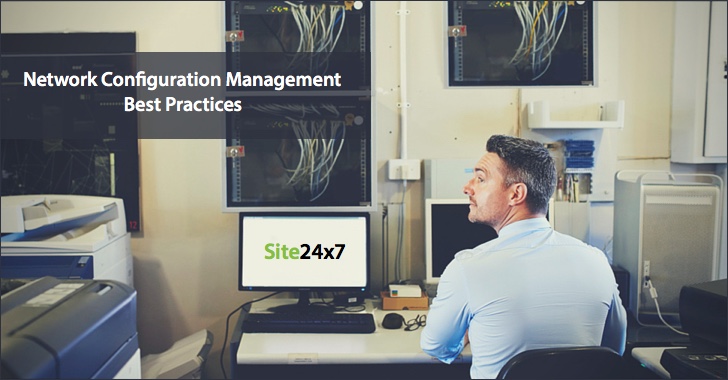Network Configuration Management Best Practices
One of the biggest responsibilities of system administrators and DevOps professionals is ensuring networks are always functioning properly. Network configuration management used to be a simple task. Watch resource usage and make the appropriate tweaks when the occasional traffic spike occurred. Since then, the rise of agile principles within the DevOps field has required system administrators to adapt to rapid shifts in their field.

Command line interfaces used to be the norm for most administration tasks however modern networks require more advanced solutions.
Increases in system complexity have made network configuration management (NCM) software an attractive option for most IT professionals. The software takes the complexity out of maintaining and organizing information about network components by providing a central hub to monitor critical network details. When a network needs to be repaired, modified, expanded, or upgraded, NCM tools enable system administrators to easily determine the best course of action.
By considering the tips below, you can ensure that you can handle network configuration changes with ease:
The Importance of Network Hardware Redundancy
Companies relying on complex infrastructure need to ensure that the networks have as many safeguards as possible to prevent downtime. Redundancy is more than just having backup systems to kick in when a device fails. Ideally, you should have at least two of everything within your company. This includes servers, network hardware, and storage devices. Virtualization makes it easy to duplicate software, however doubling up on hardware is only practical for large budget projects.
A more practical alternative would be to put together a fallback system with devices within your budget. Even if you can’t make an exact match, you should make the hardware as identical as possible. Use the same device manufacturer/model, operating system, drivers and hotfixes, ports, switches, and other equipment when possible. Regardless of how you implement your infrastructure redundancy, system administration and devOps staff need to run routine tests to ensure that the systems are always functioning.
Is the Network Update Necessary?
Rolling out updates across server clusters is a challenge for most businesses because a slight mistake can bring down the entire network. Even with infrastructure redundancy, configuration changes need to be rolled out in batches. This is where having central management of your network infrastructure pays off. By monitoring your internal network performance from a central location, you can spot trouble before it occurs. Aside from helping to prevent downtime, detailed information logging makes it easy to pinpoint the causes of bottlenecks.
Before making network changes, you should consider the following questions:
- Does the update or change affect an issue relevant to your operations?
- Does the change have any dependencies?
- What sequence needs to be followed for the change to be implemented properly?
- Will the adoption compromise your production environment?
Not every network configuration change is beneficial for your operations. As a system administrator, it’s up to you to evaluate when changes are necessary.
Embrace Network Configuration Management Software
As mentioned at the beginning of this article, network configuration management software enables system administrators and devOps professionals to manage larger networks with less effort. The biggest benefits of these solutions are:
- Instant notifications regarding network operations and unauthorized changes
- Baseline creation to ensure that you’re accurately measuring network performance
- Real time snapshots to make system restorations simpler
- Switch port mapping to make network device location simpler
- Inventory, configuration change, compliance reports so system administrators are always atop of network operations
Don’t be Afraid of Network Configuration Changes
Technology moves rapidly which is why you need to embrace agile network administration principles. By using network configuration management software across your development and live environments, you can ensure that your website will remain operational during the toughest projects. The key to effectively managing your network is to have the ability to pinpoint trouble as it comes up. This is why server monitoring software along with network configuration management software are must haves for any business.